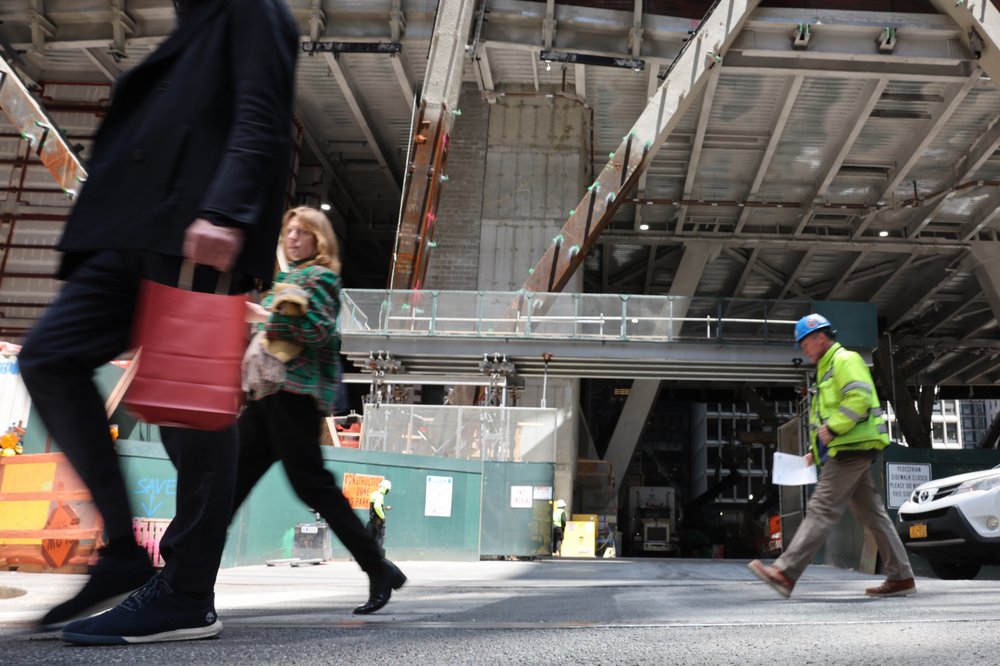Surveillance tech could identify your walk. A NYC lawmaker wants that info protected.
Aug. 4, 2025, 8:01 a.m.
If passed, the city would join other states and the European Union in protecting data about the way people walk, the experts said.

A New York City councilmember wants to protect information about the way you walk — the same way the city guards information about tax records and your fingerprints.
That’s because gait recognition, the new frontier in surveillance technology, could eventually be accurate enough to identify you based on how you walk down a busy New York street.
Councilmember Jennifer Gutiérrez has introduced a bill that would include gait patterns in what the city considers personal identifying and private information. That classification would trigger oversight of the way the information would be collected and distributed. The bill would also include other identifiers such as keyboard stroke patterns and other information about how people use their phones and computers.
Experts who spoke to Gothamist said the bill would set important limits on the ways the city collects information. If passed, the city would join other states and the European Union in protecting data about the way people walk, the experts said.
“In 2025, surveillance is everywhere. From how we move through the city to how we use our phones, nearly every action leaves a digital trace,” Gutiérrez said in a statement. “Right now, the city can collect and share information about how you walk, type or browse — without treating it as sensitive. That needs to change.”
How does gait recognition work?
Jordan Harrod, a researcher and doctoral candidate at Harvard and the Massachusetts Institute of Technology, said identifying someone by their gait would need to start with information like a video of them walking. The recognition technology could then match that with a model designed to map someone’s movements and create a gait profile, she said.
“It’s similar to fingerprint stuff,” she said. To identify someone by their fingerprint, an investigator would need to match a print with a copy already on file, Harrod added. A print alone without a match is not enough to do so.
For now, Harrod added, there are likely serious limitations to its accuracy.
Factors such as the angle of a security camera or the size of a crowd someone is walking through could throw off the ability to identify a person based on their gait.
If someone's gait is being analyzed in a busy settling like a protest or a walk through Times Square, "I think the chances that you get like 400 results that generally match are probably pretty high,” she said.
But that could change, she said, adding that facial recognition wasn't originally a very reliable way of identifying people.
Personal identifying and private information
Maria P. Angel, a resident fellow at Yale Law School’s Information Society Project, said identifying information is now far broader than traditional data such as Social Security numbers.
It now includes biometric information, which Angel said, can be divided into two categories: behavioral biometrics and physiological biometrics. A physiological biometric includes something like a person’s facial features. A person’s gait — and even something like the velocity and cadence of the way a person types — falls into the behavioral biometrics camp.
The idea that gait is identifying information is becoming more widely accepted, Angel said.
“There’s a tendency that has been going on in the last few years to include more types of data, and in particular biometric data, within what we call, identifying information,” she said.
Who uses gait recognition?
Daniel Schwarz, the senior privacy and technology strategist at the New York Civil Liberties Union, said the field is rapidly developing and right now is mostly used by private security companies.
Schwarz said such companies could work for the city indirectly as contractors. He added that city agencies, such as the NYPD, could also develop their own recognition programs. City Hall did not respond to request for comment when asked if any agencies currently collect information on a person’s gait.
Law enforcement agencies have relied on gait analysis to prosecute cases for years, according to court documents.
In Las Vegas, federal prosecutors said in 2022 that a masked police officer robbed three casinos in the city. An FBI agent wrote in a charging document that he was able to identify the suspect, Caleb Rogers, in part because of his distinctive gait.
What protections does the bill seek?
If the bill passes, and gait patterns are considered personal identifying information, it would require an employee to receive written permission from their agency's privacy officer before collecting information about gait patterns and disclosing it to anyone outside the agency.
However, there are a number of exemptions that don’t require employees to seek written permission from their agency’s privacy officer.
Information collected or disclosed by the police department in connection to the investigation of a crime is among the exemptions.
NYPD invests in new tech to combat drones used for 'nefarious' purposes, documents show MTA wants AI to flag 'problematic behavior' in NYC subways